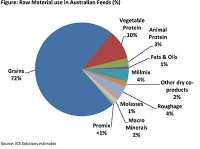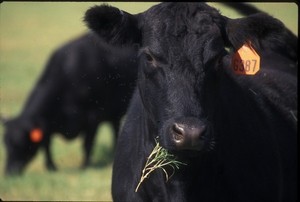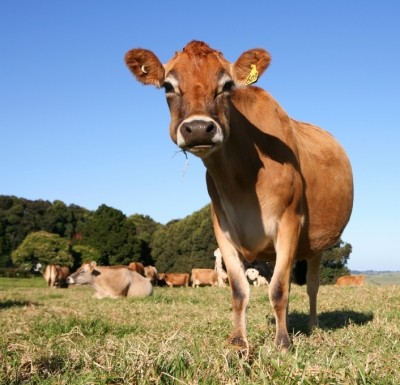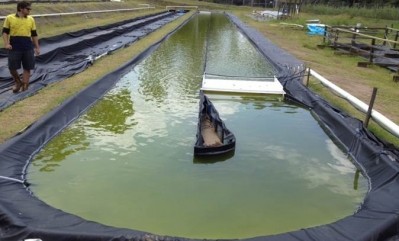Special Edition: Global Feed Regulation
‘Reforms release a pressure valve of red tape’ - Australian feed sector awaits additive gold rush

Changes to the country’s Agricultural and Veterinary Chemicals Legislation Amendment (Animal Feed Reform and Other Measures) Regulation 2015 come into effect this month.
The reforms exclude low risk animal feed products like enzymes, yeast based products, or binders from Australian Pesticides and Veterinary Medicine Authority (APVMA) regulatory obligations if they meet certain conditions around ingredients, claims, manufacturing and labelling.
John Spragg, executive officer, Stock Feed Manufacturers’ Council of Australia (SFMCA), told FeedNavigator the reform is long overdue:
“APVMA registration requirement for low risk feed additives has been a barrier to entry for new products.
The majority of feed additives are imported into Australia, but the feed and livestock sector has long been neglected by global feed supplement producers due to the cost and time it took to gain authorization under the previous system.
Industry and government have spent the past two years working in unison on the removal of these constraints – we now hope to see rapid entry of new ingredients and technologies into the Australian market.”
Level footing
Australian Minister for Agriculture, Barnaby Joyce, agrees.
He said the reform of animal feed regulations will make the feed and livestock sector more resilient and could see up to 100 new products being introduced in the next five years.
“Australia has been lagging behind international competitors in our access to new and innovative feed varieties - and not only does it [the reform] put us on level footing, it could also improve long-term animal health and reduce workload for the regulator — the APVMA ....
The benefits will be felt downstream with industry estimating increased production rates from new feeds could improve returns by up to AUS$10 per ton of feed,” said Joyce.
He said the government has been listening to industry about where it finds regulations are burdensome.
“These reforms release a pressure valve of red tape that was preventing new and existing products hitting the market quicker, with fewer impediments,” said the minister.
Spragg said, in effect, the legislation allows for mutual recognition of existing regulatory authorizations in other markets. “There is no point in the APVMA duplicating work done elsewhere,” he said.
Exclusion criteria
To be excluded from the requirement to register a nutritional or digestive animal feed product, it must be one that is fed to, and voluntarily consumed by an animal. The product must pass four separate tests:
- Ingredients: the product must not contain certain ingredients, such as antibiotics; and all ingredients must be on at least one of the specified list of substances that are generally recognized as safe.
- Manufacturing systems: the product must be made to one of a number of specified quality assurance (QA) systems;
- Labelling: the label must contain specified information about the product; and
- Claims: any claim that the product treats a disease, condition or injury must be backed up by high quality scientific evidence, accessible to the supplier.
Manufacturing and supply companies will be required to complete self-assessment, which requires retention of records confirming their products meet the four specified criteria.
“There will be additional costs for firms in meeting this requirement but that outlay, however, will be more than offset by their not having to pay APVMA registration and levy charges as well as getting products to market in a more timely manner,” said Spragg.
It could be argued that under such a self-assessment system, companies could market a product that does not meet the four specific criteria and thus present a performance risk to the users purchasing such additives.
But, in submitted comments on the reforms last November, the SFMCA said nutritional feed products are low risk and “any less than expected performance will be reflected in the product and its long term sales. We see this as a commercial issue that should be outside regulatory control.”
Industry checks
Government policy in Australian has long been about ensuring industry ownership of feed risk management. “If you look back 30 years ago, when I entered the sector, that certainly wasn’t the case. There was intensive sampling, analysis, and label checking by state authorities of feed producers.
But there has been huge scaling back of state and federal intervention in the sector over those years – policy has been very much about placing responsibility for feed safety firmly at the door of the feed sector itself,” said Spragg.
Quality assurance
Feed mill safety management assessments are conducted by the SFMCA operated quality assurance (QA) accreditation program, FeedSafe. It was introduced 13 years ago.
Association members are required to comply with the certification program to retain their membership.
FeedSafe, which is endorsed at federal level, is based on a Code of Good Manufacturing Practice (GMP), and it has been developed in conjunction with the chief veterinary officers within each state.
Feed manufacturers must undergo annual site audits, which are conducted by independent third party auditors.
Spragg reckons the QA controls in place provide Australia with a robust system that has “an excellent record of managing feed and food safety hazards” with testing programs identifying the supply of meat, milk and eggs as being of a high quality and low risk in terms of contaminant presence.
“We have found that its imported raw materials that are more likely to be at risk of heavy metal contamination so they need to be tightly controlled,” he added.
The latest estimate of annual feed use in Australia is 12.2 million tons.
“Of the total 12m MT of feed used, compound feed represents around 7m MT. The balance is made up of feed milled on site by beef feedlots - around 3M MT - and farmers mixing feed on farm,” said Spragg.

















